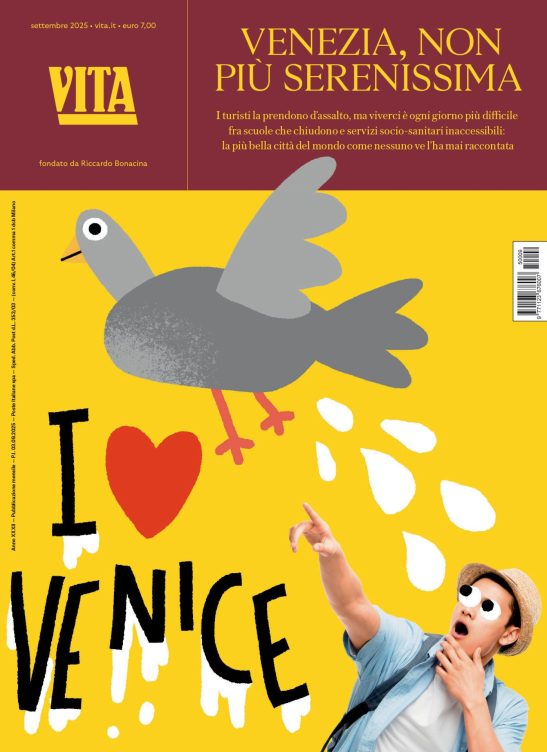Mondo
Switzerland: The Gavi Alliance, on the way to the MDGs
The Gavi Alliance reports that successes in global immunisation are boosting progress towards millennium development goals. Poor countries taking a "huge step forwards"
di Staff
A revitalised global effort to improve immunisation programmes and strengthen health systems in the poorest countries is saving an increasing number of lives and making a significant impact towards achieving the UN Millennium Development Goals.
Of all health interventions, immunisation offers poor countries the best opportunity to take a giant step forward in their own journey towards social and economic development, Julian Lob-Levyt, Executive Secretary of the GAVI Alliance said today. Health gains that took rich countries 150 years to achieve can now be attained in just 10 to 15 years by developing countries thanks to new technology and a revitalised global commitment to protect all children against preventable diseases, he added.
Introducing GAVI’s annual Progress Report, Dr Lob-Levyt said that renewed efforts by governments, health organisations and new players in the private sector, including philanthropists, are making a very positive difference in global health.
New vaccines and technology, increased coordination and new funding streams are allowing us to tackle the killer diseases in a methodical and consistent way. We are at a seminal moment in positively impacting health in poor nations, he said.
The GAVI Alliance supports immunisation programmes in 72 of the world’s poorest countries. It brings together all the key stakeholders in immunisation including UNICEF, the World Health Organization, the World Bank, donor and developing nations, the Bill & Melinda Gates Foundation and other philanthropists, civil society organisations and representatives of the vaccine industry.
More than 2.9 million premature deaths have been averted by the Alliance since it was formed in 2000 as the Global Alliance for Vaccines and Immunisation (GAVI) to help achieve the UN Millennium Goals and especially Goal Four — a two-thirds reduction in the mortality rate of child under five by 2015.
Immunisation is an engine for child survival and a pillar of public health, with vaccines long being one of its most consistent success stories, write the joint board chairs Dr Margaret Chan, the Director-General of the World Health Organization and Graça Machel, in their introduction to the Progress Report. This is a significant contribution to the reduction of child mortality below 10 million per year for the first time and a motivating stride towards achieving the Millennium Development Goals.
GAVI’s Progress Report catalogues a series of advances in saving children’s lives and protecting people’s health. These include:
– A steady increase in immunisation coverage rates: WHO projects that in 2007, 75 per cent of children in GAVI-eligible countries were immunised with three doses of diptheria, tetanus and polio vaccines (DTP3), an increase from 64 per cent in 2000.
– More developing countries are making efforts to introduce new and under-used vaccines. For example, 67 out of the 69 eligible countries applied for GAVI support for hepatitis B vaccine by 2007.
More countries are also seeking to improve their national health systems: 55 per cent of eligible countries have applied for GAVI support to do so.
– The commitment of donor governments to fund global health challenges has increased. For example, their long-term financial commitment to the International Finance Facility for Immunisation (IFFIm) has allowed GAVI to almost double its support for a range of country programmes, from US$ 206 million in 2005 to US$ 394 million in 2007. GAVI has disbursed a total of US$ 862.3 million of IFFIm proceeds since the first bond launch in November 2006.
– Donors are also making it easier for GAVI-supported countries to plan and implement long-term immunisation programmes: in 2007, 67 percent of government donations to GAVI covered a period of three years or more, up from 33 per cent in 2005.
– The engagement of emerging market vaccine producers is increasing, supplying 43 per cent of GAVI-funded vaccines in 2007.
– By the end of 2007, GAVI was able to provide a total of US$ 3.5 billion to immunisation and national health programmes up until 2015 (74 per cent of which is being spent on new and under-used vaccines).
The sixty-first World Health Assembly held in May heard that, while vaccines already prevent 2 to 3 million deaths a year, they are still underutilised. WHO’s member states requested the organisation to continue to emphasise the value and impact of immunisation and further help countries reach higher coverage rates and to encourage industry to develop new vaccines.
We need to continue to work with all our partners to support countries that are not yet on track to meet MDG 4, Dr Lob-Levyt noted.
Next week, the joint GAVI Alliance and GAVI Fund boards are expected to finalise GAVI’s commitment to an Advance Market Commitment (AMC), a funding model to stimulate the development and availability of new vaccines. A pilot AMC for a pneumococcal vaccine will get underway this year. Six leading donors have set aside US$ 1.5 billion for the project.
The joint board is also due to consider which vaccines GAVI will offer to fund in future. The aim is to make the best use of resources to achieve the maximum disease burden impact from immunisation. To do this GAVI partners have evaluated vaccines that will become available over the next five years taking into account their relative impact, importance to countries, availability and affordability.
More info
www.gavialliance.org
17 centesimi al giorno sono troppi?
Poco più di un euro a settimana, un caffè al bar o forse meno. 60 euro l’anno per tutti i contenuti di VITA, gli articoli online senza pubblicità, i magazine, le newsletter, i podcast, le infografiche e i libri digitali. Ma soprattutto per aiutarci a raccontare il sociale con sempre maggiore forza e incisività.
